Bitcoin (BTC) had its worst monthly loss since the March 2020 meltdown, falling more than 35% from April. On May 19th, the bellwether cryptocurrency took a battering, with prices plummeting by more than 31% to a low of $30,000 at one point. Since late January, Bitcoin has not traded at such levels.
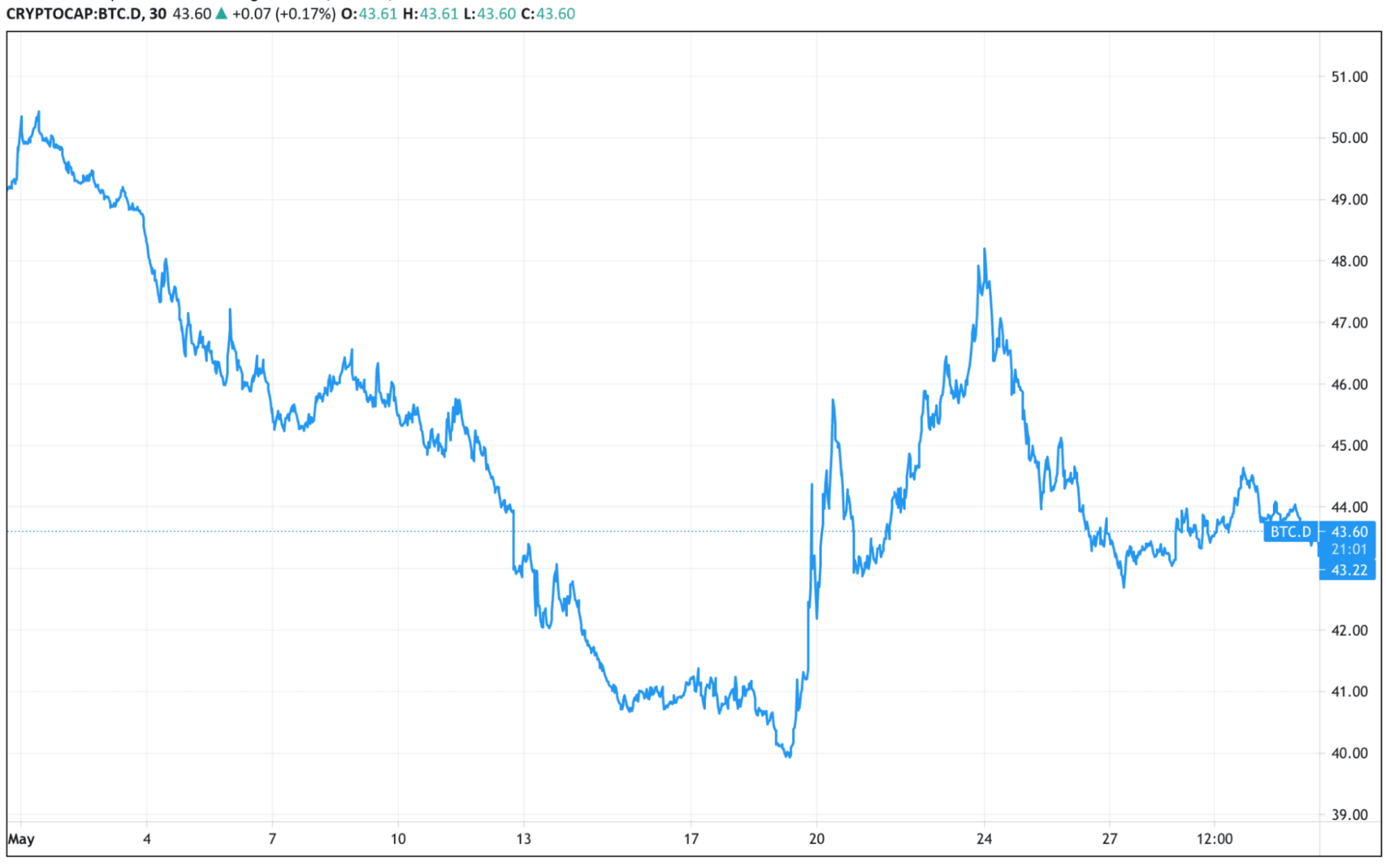
Source: Tradingview
Since reaching its all-time high, Bitcoin has been on a turbulent course. The cryptocurrency has been under pressure following a series of tweets by billionaire Tesla CEO Elon Musk, most notably his reversal on Tesla accepting Bitcoin as payment. Further exacerbating the sell-off, Chinese authorities have also initiated a crackdown on Bitcoin mining and trading as part of continuous measures to minimize speculative and financial risks. The barrage of negative news has pushed Bitcoin to its lowest level since Q1, down more than 52% from its record high of $65,000 on April 14th.
The Bitcoin dominance index, which measures Bitcoin’s market value as a percentage to the value of all cryptocurrencies, fell from 50% to under 39% on May 19th, according to CoinMarketCap. The index has been making a slow recovery, climbing back to 42% by May 31st.
Ethereum (ETH) moved in tandem with the broad-based decline in cryptocurrencies, losing over 59% from peak to trough and halving its market capitalization down to $250 billion. Since the crash of May 19, ETH has shown a tenacious rebound, finishing the month of May at around $2,700, down only 2.3% from April. While the price of ETH has not recovered the relative strength that it had in April and May, the reaction to the capitulation has been positive.
ETH has been remarkably resilient in comparison to BTC in the past month. Notably, the ETH/BTC chart resumed its uptrend since the trough of May 23rd, suggesting investors’ preference to own Ethereum at the moment. ETH’s relative strength can be attributed to its strong on-chain metrics and promising fundamental outlook. The number of Ethereum active addresses has hit an all-time high of 20.2 MM, according to Glassnode.
Number of Active Addresses on the Ethereum Network (Monthly)
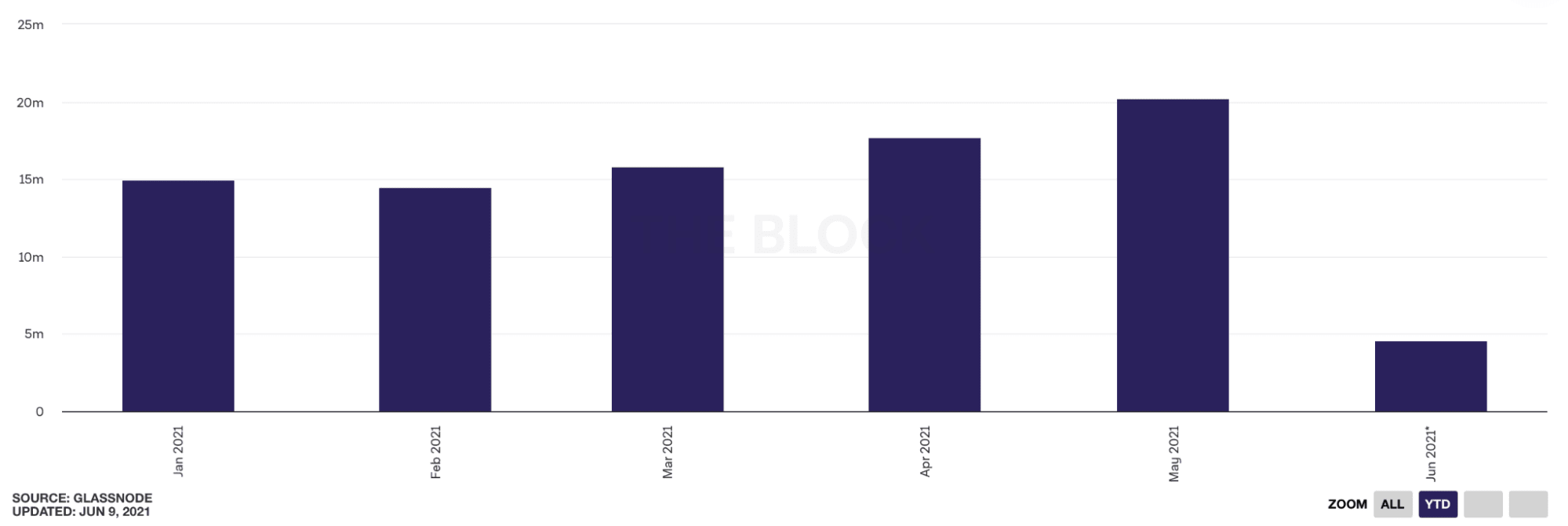
Source: The Block, Glassnode.
Furthermore, market observers have noted that institutional interest is quickly flowing over from Bitcoin and into Ethereum. Institutional investors may be positioning themselves in anticipation of future demand with the forthcoming Ethereum exchange-traded fund (ETF) launch.
While other cryptocurrencies have followed Bitcoin's precipitous decline, Ethereum has a bevy of scheduled improvements that might serve as a trigger for a price recovery.
The network will benefit significantly from the proposed ETH 2.0 update. These changes would increase transaction speed while cutting the cost of transferring assets across the network dramatically. Lowering the transaction cost would make the network more accessible to individuals who could not previously afford to utilize it, resulting in increased demand for ETH.
As the entire crypto-economy plunged into chaos, trading volume on derivatives exchanges surged as traders sought to capitalize on the falling value of cryptocurrencies. In May, Binance Futures processed over $3 trillion in volume, marking a new single-day record volume of over $200 billion on May 20th.
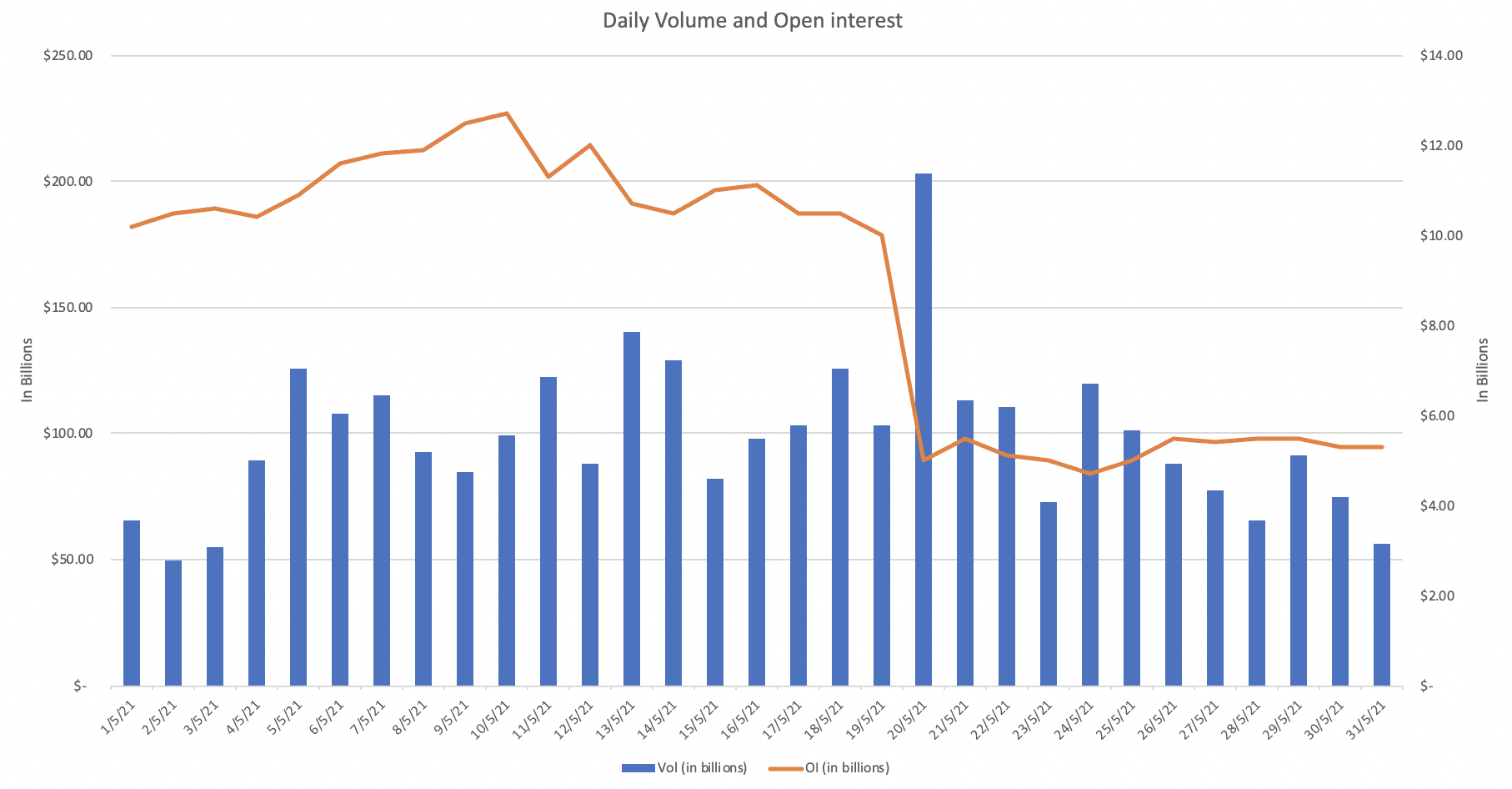
Source: Binance Futures
Meanwhile, open interest in Binance took a nosedive following the dramatic crash of May 19 as billions of dollars worth of liquidations wiped out the exchange’s open interest by half. Consequently, open interest fell from $12 billion to under $5 billion overnight and has yet to recover till today.
Without surprise, Bitcoin’s volume dominance surged and climbed to 50% by the end of May. Bitcoin’s volume dominance has been suppressed in prior months as the ‘alt-season’ dominated headlines. Since the crash of May 19, traders have turned their attention towards the bellwether cryptocurrency to capitalize on its increased volatility.
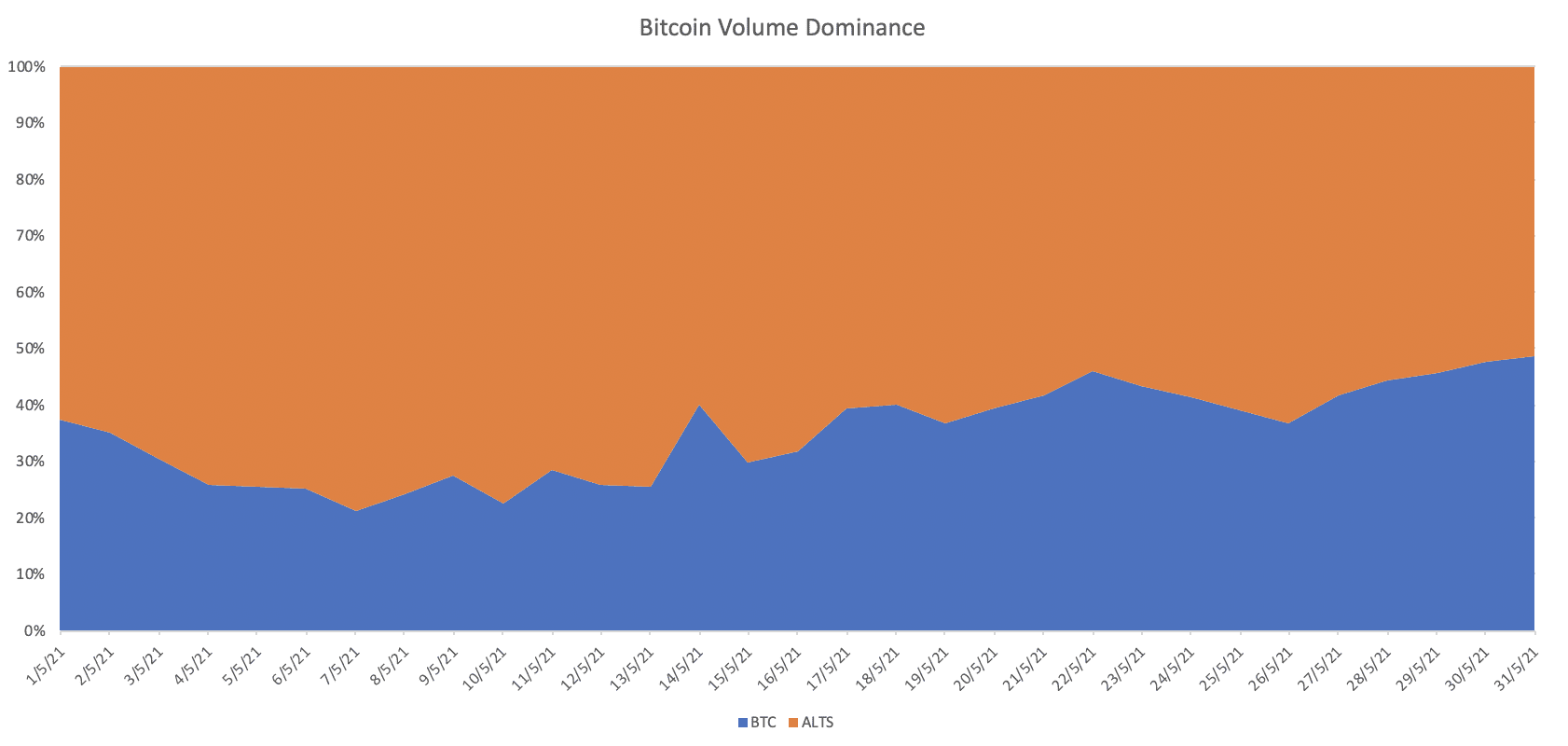
Source: Binance Futures
Bitcoin’s open interest dominance steadily grew from 40% to 55% in tandem with volume trends, suggesting that traders are positioning long-term directional bets on Bitcoin.
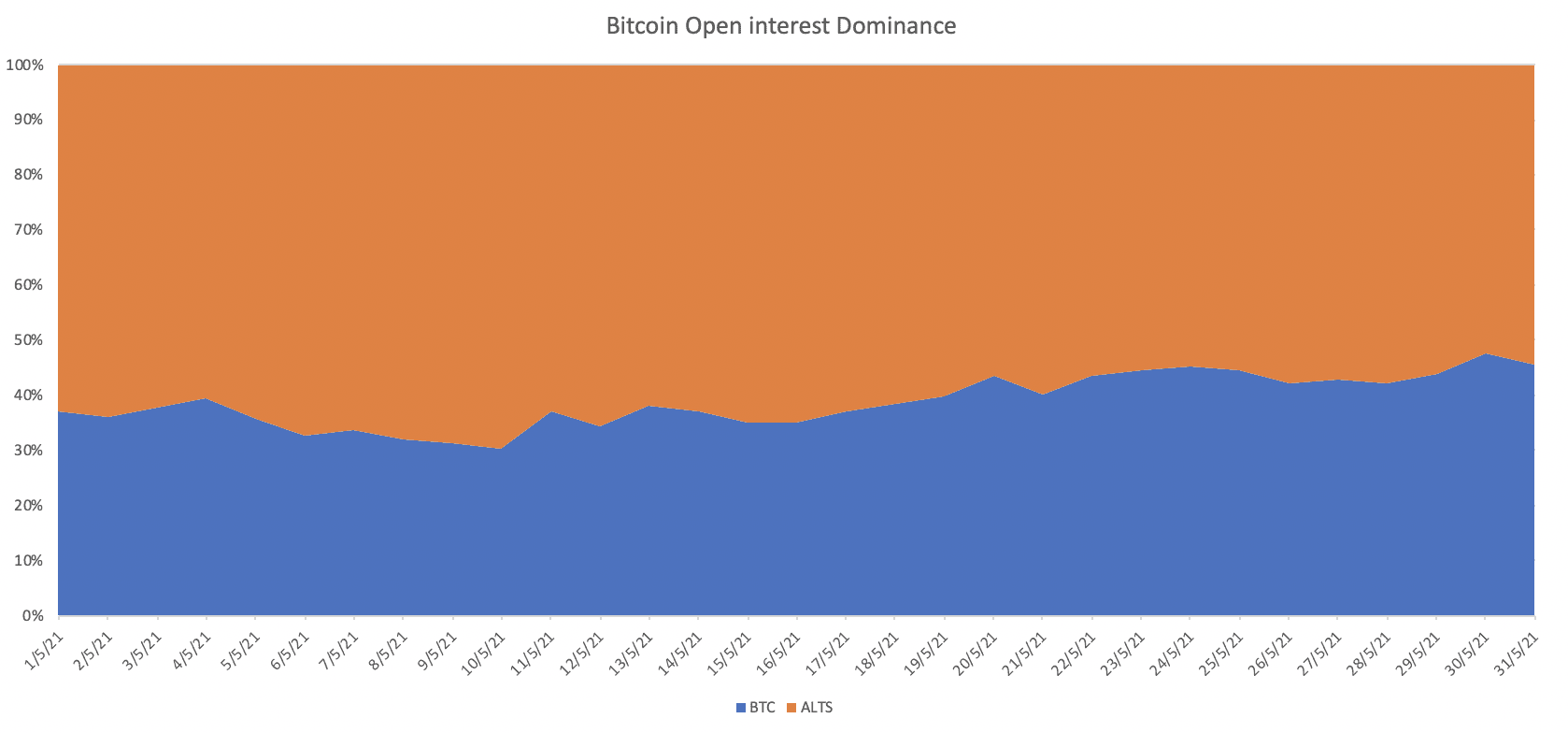
Source: Binance Futures
Despite falling BTC prices, open interest in BTC contracts has steadily grown throughout the month, indicating that new money is flowing into the market (reflecting new positions). This could be a sign of bullish sentiment if long positions fuel the increase in open interest.
What’s next for Bitcoin?
Many investors remain unconcerned with the current market collapse as fundamentals continue to grow. As the saying goes, no bull market rises in a straight line. While it might be nerve-wracking, market corrections occur regularly throughout bull markets. Market corrections may be beneficial in that they shake out excessive leveraged positions, adjust overextended prices and provide reinvesting opportunities.
For instance, during the bull market of 2017, we've seen many price drawdowns of more than 30% in Bitcoin. These drawdowns provided buying opportunities as the bullish trend progressed and ultimately pushed bitcoin to an all-time high of $65,000.
In recent events, El Salvador became the first country to recognize bitcoin as legal tender officially. The legislation is a significant step forward for the crypto community as global crypto adoption continues to grow. Despite Bitcoin’s price correction in recent weeks from the all-time high near $65,000 reached in April, signs continue to mount of increasing demand for cryptocurrencies from institutional buyers and brokerage firms.
Many experts remain bullish about crypto assets in the medium to long term with these fundamentals in place. Investors are also watching macroeconomic developments for clues about Bitcoin's future trajectory. This year, the US Dollar has been a significant driver of Bitcoin's rise. However, the recent surge in the value of the US dollar has pushed crypto assets downwards. Any signs of continuation in the Dollar's decline will set off the next wave of growth for digital assets like Bitcoin.

